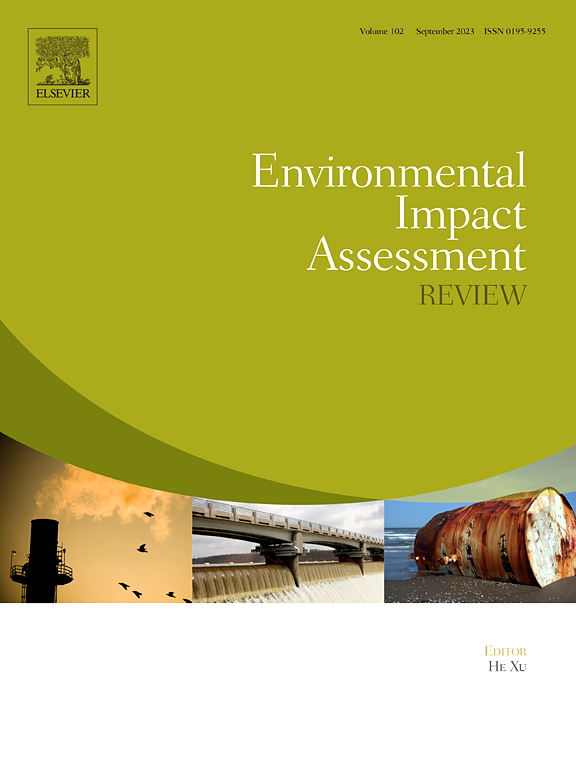The contradiction between bridging the digital divide and reducing carbon emissions:Evidence from households in China
IF 11.2
1区 社会学
Q1 ENVIRONMENTAL STUDIES
引用次数: 0
Abstract
Bridging the digital divide (BDD) brings economic benefits to households, but it may also generate environmental costs. Based on the 2014–2020 CFPS database and county-level data, this study investigates the impacts of BDD on household carbon emissions (HCEs). To address the potential endogeneity, generalized difference-in-differences and Bartik IV as well as causal mediation effect models are applied in empirical estimates. We find that BDD increases HCEs, confirming a contradiction between reducing digital inequality and carbon reduction goals. Although BDD assists households in escaping relative poverty, it also raises high‑carbon consumption share among households. Further analysis reveals that improving environmental satisfaction, aligning social norms and increasing green space accessibility could mitigate the impact of the high‑carbon consumption share mechanism without affecting residents' well-being. In addition, BDD exerts a greater influence on HCEs when the householder is younger, the household lives in a rural area, and social capital is higher. This study innovatively reveals the contradictions and cracking mechanisms between the two sustainable development goals (SDGs), and emphasizes the importance of government measures to mitigate potential negative environmental impacts while promoting digital development at the household level.

弥合数字鸿沟与减少碳排放之间的矛盾:来自中国家庭的证据
弥合数字鸿沟给家庭带来了经济利益,但也可能产生环境成本。本研究基于2014-2020年CFPS数据库和县域数据,探讨了BDD对家庭碳排放的影响。为了解决潜在的内生性,在实证估计中应用了广义差中差和Bartik IV以及因果中介效应模型。我们发现,BDD增加了hce,证实了减少数字不平等与碳减排目标之间的矛盾。虽然BDD帮助家庭摆脱相对贫困,但它也提高了家庭中高碳消费的比例。进一步分析表明,提高环境满意度、调整社会规范和增加绿地可达性可以在不影响居民幸福感的情况下缓解高碳消费分担机制的影响。此外,当户主年龄较轻、家庭居住在农村、社会资本较高时,BDD对hce的影响更大。本研究创新性地揭示了两个可持续发展目标之间的矛盾和破解机制,强调了政府在促进家庭层面数字化发展的同时,采取措施缓解潜在的负面环境影响的重要性。
本文章由计算机程序翻译,如有差异,请以英文原文为准。
求助全文
约1分钟内获得全文
求助全文
来源期刊

Environmental Impact Assessment Review
ENVIRONMENTAL STUDIES-
CiteScore
12.60
自引率
10.10%
发文量
200
审稿时长
33 days
期刊介绍:
Environmental Impact Assessment Review is an interdisciplinary journal that serves a global audience of practitioners, policymakers, and academics involved in assessing the environmental impact of policies, projects, processes, and products. The journal focuses on innovative theory and practice in environmental impact assessment (EIA). Papers are expected to present innovative ideas, be topical, and coherent. The journal emphasizes concepts, methods, techniques, approaches, and systems related to EIA theory and practice.
 求助内容:
求助内容: 应助结果提醒方式:
应助结果提醒方式:


